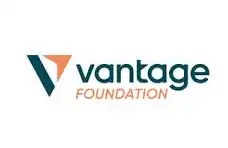From 'Vaporware' to 'Cash Flow': The Rise of Utility Tokens After the VC Bubble Burst
Original Title: "From 'Air' to 'Cash Flow' - The Rise of Utility Tokens After the VC Bubble Burst"
Original Author: Yinan Shuo
By early 2025, as secondary market liquidity tightened, a large number of meme coins primarily driven by "story + airdrop" were ruthlessly popped in the bubble.
Countless meme coins plummeted to new lows, with Bitcoin's market dominance rising to a five-year high of 62.1% at the same time. The Altcoin Season index even hit a record low of 4 points in May 2023.
However, "utility tokens" such as Uniswap (UNI), Aave (AAVE), Pendle (PENDLE), Hyperliquid (HYPE), attracted a reverse flow of funds and saw both their prices and on-chain revenue surge. They share a common feature: real, auditable protocol cash flow, returning value to token holders through buybacks, revenue sharing, or staking.
This article attempts to outline the logic of fund migration after the VC bubble burst and uses four representative projects as samples to explore how the "on-chain P/E era" is reshaping the crypto valuation system.
Market Background: When Narratives Recede, Cash Flow Becomes Scarce
· VC Slowdown: In Q2 2025, global crypto financing plummeted to $49.9 billion, down 21% from the previous quarter, hitting a new low for a single quarter since 2020, as investors became cautious about "concept hype."
· Capital Inflows to Blue-Chip DeFi: While Bitcoin continued to strengthen its dominance, the DeFi sector experienced significant fragmentation. However, protocols with the "revenue-distribution" closed loop saw continuous growth in TVL and trading volumes. Pendle's TVL surpassed $55.9 billion in July, nearly tripling year-to-date.
· Valuation Anchor Migration: In a traditional risk-off cycle, investors are more willing to pay for quantifiable cash flows rather than mere narrative premiums.
What Are "Utility Tokens"?
Definition: Token holders can share in protocol revenue (Fee Capture) or indirectly enhance the "on-chain EPS" (earnings per token) through buybacks/destruction, staking rewards.
Typical Pattern
1. Fee Switch / Transaction Fee Sharing: Return or buy back protocol fees on a proportional basis (e.g., GMX).
2. Lending Margin & Liquidation Fee: Allocate the interest spread and liquidation rewards to the treasury for buyback (AAVE, Maker).
3. Yield Tokenization: Split future yields into trades, with a protocol cut (Pendle).
4. Infrastructure Fuel: Instantly repurchase and burn high-frequency matching engine fees (HYPE).
Four Major Case Studies Overview

Deconstruction: How Does Cash Flow Drive Valuation Recovery?
Uniswap (UNI)
Previously, the market had always seen UNI as a "pure governance token." Subsequently, the Uniswap Foundation passed a vote for a $165.5 million investment plan. The Uniswap Foundation proposed allocating $165.5 million to the following:
· $94 million for funding (developer grants, core contributors, validators);
· $25.1 million for operations (team expansion, governance tool development);
· $45 million for liquidity incentives.
Currently, the $UNI token does not have any tangible token value capture or token buyback plan!
Aave (AAVE)
The Aave DAO approved a weekly buyback of approximately $1 million AAVE using protocol surplus and locked it in the DAO treasury:
· The first week's execution led to a 13% intraday price increase and doubled trading volume.
· The lending margin + liquidation fee provides a stable cash flow, coupled with a 32% YoY increase in V3 TVL, making the buyback plan a long-term arsenal.
Pendle (PENDLE)
Pendle operationalized the "future yields" derivative narrative in the trading market:
· Extract 5% yield + 5 bps transaction fee to generate auditable daily protocol revenue.
· High-yield strategies (e.g., stETH YT yield once>11%) are more attractive in a low-rate environment, leading to continued inflows.
Hyperliquid (HYPE)
As a high-frequency trading DEX, Hyperliquid released the CoreWriter precompile in July, enabling HyperEVM contracts to directly place orders, settle, call the CLOB, and implement an on-chain fee buyback and burn mechanism:
· On the upgrade week, on-chain active addresses and trading volume both hit all-time highs.
· Value Recapture Immediacy + High-Frequency Trading Fee Scale make HYPE a strong β in the "on-chain cash flow" narrative.
Three Moats Against a Bear Market
1. Deterministic Cash Flow: On-chain income & expenses auditable, DAO resolutions openly transparent, reducing information asymmetry.
2. Buyback / Profit Sharing Loop: Embedding the "Protocol Revenue → Token Value" path into smart contracts creates an effect akin to stock buybacks or dividends.
3. Institutional Friendly: Quantifiable yield metrics (P/S, P/E) reduce valuation uncertainty, facilitating market-making and structured product design.
Conclusion
After the VC story recedes, the market is re-pricing "verifiable cash flow."
Utility tokens that combine on-chain revenue, token value, and governance rights are scarce assets for navigating cycles.
As mainstream DeFi protocols progressively introduce Fee Switch, buyback, or surplus distribution, it signals a shift in crypto market valuation logic from the "narrative market" to the "cash flow market."
Welcome to join the official BlockBeats community:
Telegram Subscription Group: https://t.me/theblockbeats
Telegram Discussion Group: https://t.me/BlockBeats_App
Official Twitter Account: https://twitter.com/BlockBeatsAsia











